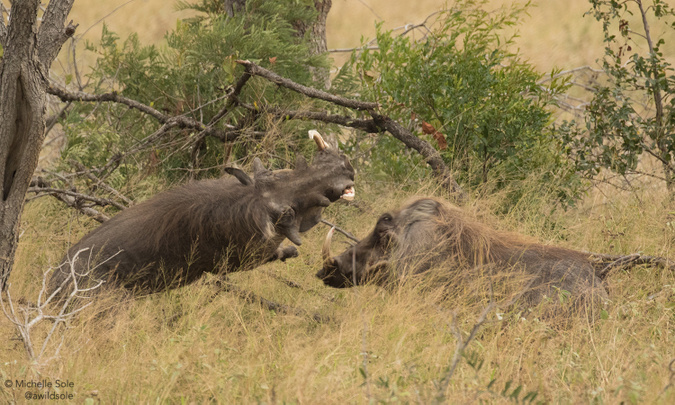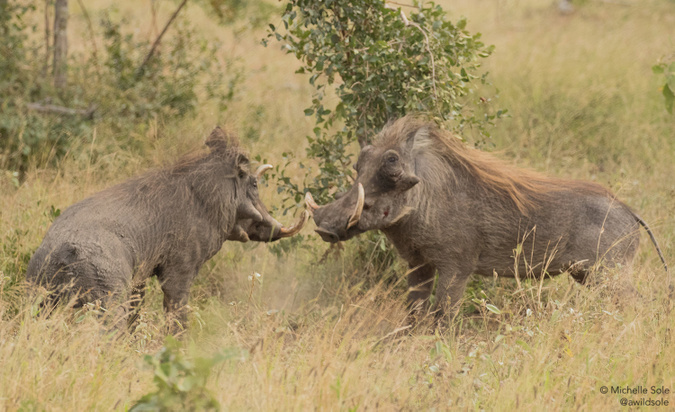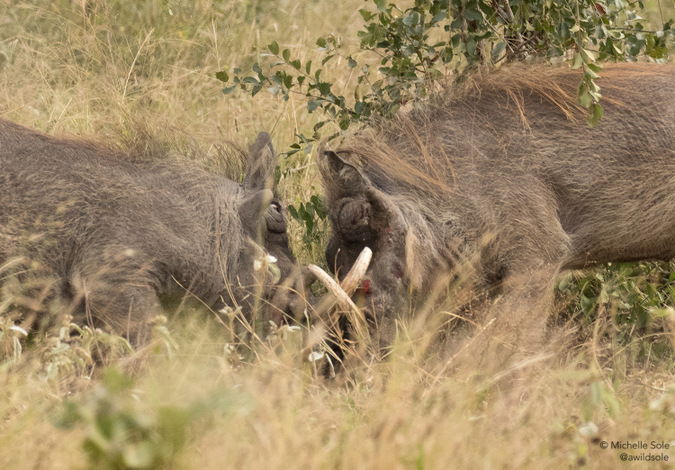
I’ve always thought Disney’s portrayal of Pumba in The Lion King is the epitome of a warthog. Working as a field guide I am fortunate enough to see these funny characters on a daily basis. To me, they are quite possibly the most comical of Africa’s mammals.

Back to science – despite their cuteness, warthogs are clearly well designed for combat. Warthogs are not territorial, but males will fight for mating rights.
The name warthog comes from warts found on the face. Sows have one pair of warts whilst boars have a second pair. The second pair of warts are much larger and aid in deflecting enemy tusks whilst fighting, thereby protecting the eyes.

It was late in the afternoon as we left Berg-en-Dal camp in the Kruger National Park. In the distance, two boars knelt on their front legs facing one another. Snout to snout, forehead to forehead. Their muscles tensed and their bulky mass pushed forwards. The smaller of the two was missing his tail. Was this the scar of an earlier battle? Or had he previously had a close encounter with a predator?

We watched in fascinated silence. Every now and then dust would fly into the air as one of the boars flicked up his head in a sideways motion in an attempt to catch his opponent off balance and reach the fleshy underbelly with those deadly tusks.

These flying lessons didn’t deter the smaller boar. He intermittently jousted back. It was then that we noticed just how sharp one of his tusks was. He may not have had the size or the power, but he was quicker and more agile than the bigger hog.

Suddenly there was a break in the wrestle and the larger pig turned on his heel and sprinted away. The smaller, tailless boar was hot on his heels. The warthogs quickly covered a surprising amount of ground and from our vantage point, we lost sight of the larger hog. The victor returned, tusks dripping with blood and his head held high.